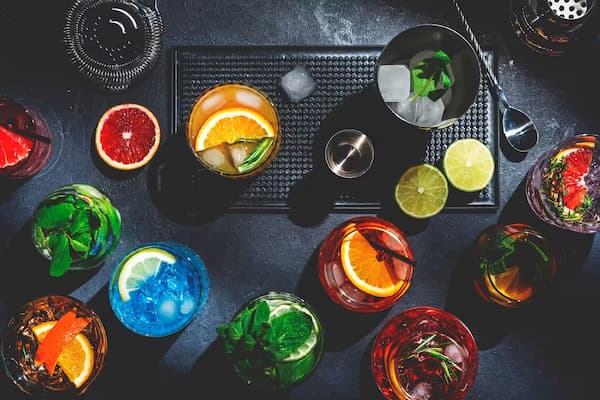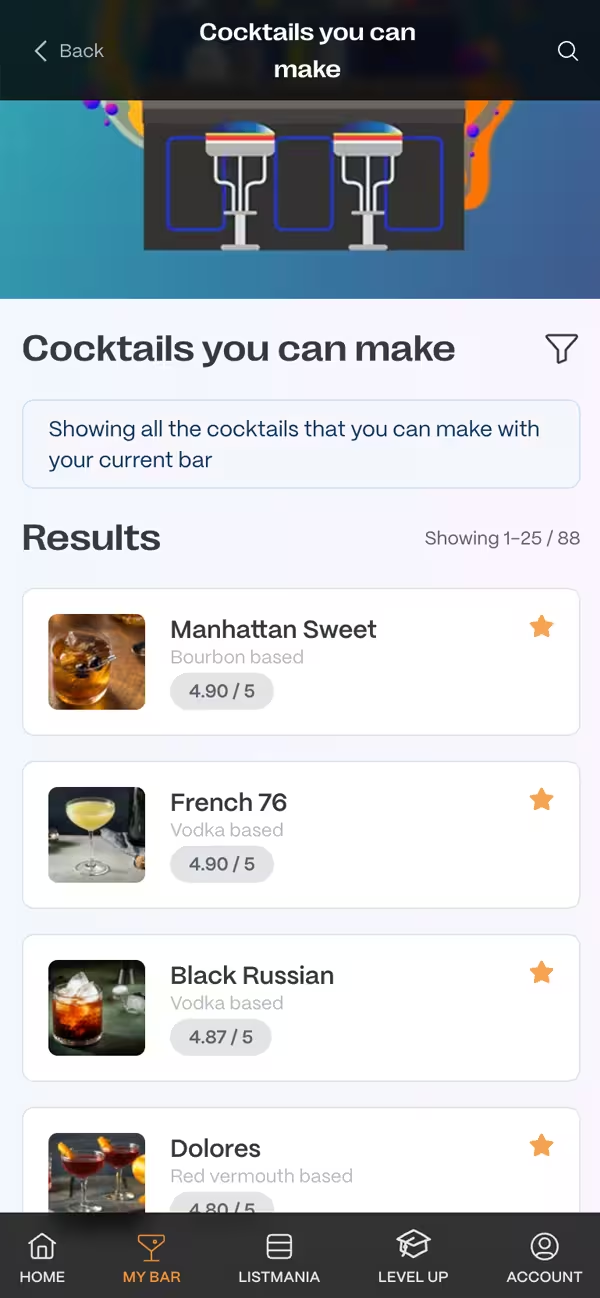Energy drink
With Energy drink you can make
We've got 115 cocktails that can be made with Energy drink.
Find out what to make with Energy drink
Q&A
What is the history and origin of energy drinks being used in cocktails?
The use of energy drinks in cocktails can be traced back to the late 1990s and early 2000s, coinciding with the global surge in popularity of brands like Red Bull. The introduction of these caffeinated energy drinks to the market opened up new possibilities for mixologists and party-goers alike, seeking innovative ways to combine the stimulating effects of caffeine with the relaxing effects of alcohol. The most iconic cocktail to emerge from this period is the 'Vodka Red Bull.' Its widespread popularity set the stage for energy drinks to become a staple ingredient in the nightlife and party scene, blending the worlds of energy supplements and alcoholic beverages.
What makes energy drinks a unique ingredient in cocktails compared to traditional mixers?
Energy drinks offer a combination of high caffeine content and distinctive flavors that set them apart from traditional cocktail mixers like soda or tonic water. Their blend of caffeine, taurine, vitamins, and sometimes herbal supplements like guarana, provides a stimulating effect that can enhance alertness and stamina. This makes energy drinks particularly appealing for creating cocktails intended to offer both a flavorful experience and an energy boost, which is something traditional mixers cannot provide. The wide range of flavors available in energy drinks also allows for creative and innovative cocktail recipes beyond what can be achieved with standard mixers.
How should energy drinks be incorporated into cocktails to maintain their effervescence and flavor profile?
To preserve the effervescence and flavor profile of energy drinks when mixing them into cocktails, it's important to use gentle mixing techniques. Avoid shaking cocktails that contain carbonated energy drinks; instead, opt for stirring or layering the ingredients. Start by adding ice to the glass to chill it, then pour in the energy drink, followed by the alcoholic component. If desired, you can gently stir the mixture to combine the flavors without diminishing the carbonation. For layered cocktails, carefully pour the alcohol over the back of a spoon to create a distinct separation between the layers. These methods help maintain the integrity of the energy drink's fizz and taste.
Are there non-alcoholic cocktails that can be made using energy drinks?
Yes, energy drinks can be used to create refreshing and stimulating non-alcoholic cocktails, often referred to as 'mocktails.' These drinks capitalize on the unique flavors and energizing effects of energy drinks while omitting alcohol. A popular option is to mix an energy drink with fresh fruit juices, such as orange or cranberry juice, and add a splash of soda water for extra fizz. Garnishing with fresh fruit or herbs can enhance the visual appeal and add a layer of complexity to the flavors. Non-alcoholic energy drink cocktails offer a great alternative for those seeking the exhilarating taste and effect of energy drinks without the alcohol content.
What are some creative serving suggestions for energy drink cocktails at a party or event?
For a memorable party or event, consider serving energy drink cocktails with innovative presentations. Use colorful LED ice cubes to add a vibrant glow to the drinks, enhancing their visual appeal, especially in dim lighting. Serving cocktails in unusual glasses, such as laboratory flasks or mason jars, can also add a unique twist. For large gatherings, preparing a batch of energy drink cocktail punch in a clear dispenser allows guests to see the mix and serves as a conversation starter. Don't forget to garnish with eye-catching elements like edible glitter, fresh fruit skewers, or candy rims to make each cocktail a standout creation. These creative serving suggestions will surely impress guests and elevate the overall event experience.
Ingredients like Energy drink
Other Soft Drinks
How it works
Easily create your bar from the ingredients you have at home, and we'll show you what you can make with the ingredients you have to hand.
Once you've added this ingredient head to your My bar page and fill up everything else you have.
We'll also show you cocktails that can make by substituting what you have for one of the ingredients you don't, riffing on the original. Now go forth and create something delicious!





















